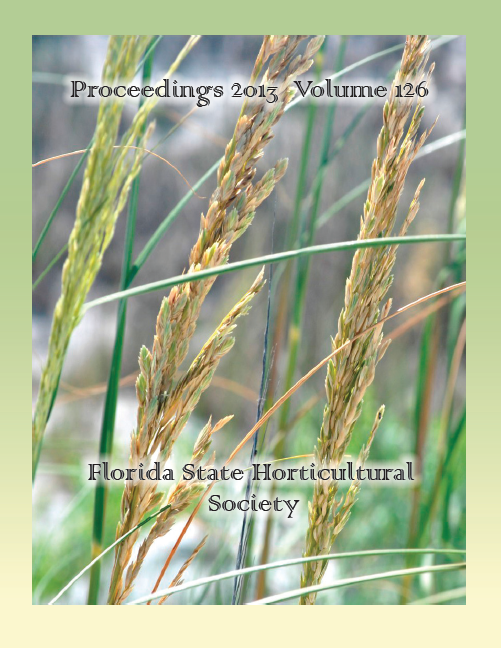Published 2013-12-01
Keywords
- sprinkler spacing,
- application rate,
- cold damage,
- critical temperature,
- variable irrigation system pressure
Abstract
The United States is the largest strawberry producing country in the world and Florida is the second largest strawberry producing state, with 10% to 15% of the total U.S. production. To achieve high profits, strawberries in Florida are planted during the winter and protection from cold damage is therefore needed. Irrigation is the primary method for cold (frost and freeze) protection. During extreme cold events recently experienced in the Dover/Plant City area of Florida, high volumes of irrigation used to protect the plants caused the aquifer level to drop 60 feet at certain locations, around 750 residential wells were impacted and more than 140 sinkholes were reported. Although sprinkler irrigation for cold protection has been effective for the past several decades, the recommended application rate of 0.25 inches per hour has not been revised and the effectiveness of alternative rates for satisfactory protection has not been studied. The objective of this study was to determine the effect of varying sprinkler supply pressure and spacing on strawberry yield and quality under cold conditions. Three main components of the irrigation system, i.e., supply pressure, sprinkler spacing, and irrigation controller were combined into five treatments: 1) GROW (50 psi, at a 48-ft sprinkler spacing); 2) AC (controlled by an automatic system following the same pressure and spacing settings as GROW); 3) LOW (30 psi, at 48-ft sprinkler spacing); 4) SPC (50 psi, at 40-ft sprinkler spacing); and 5) NO (non-irrigated plots). Irrigation was controlled by thermocouples for GROW, LOW, and SPC treatments. Results showed significant yield differences between the irrigated treatments and the control. Recovery capability from cold events among the irrigated treatments did not differ significantly. Only irrigated treatments showed a linear increase in the yield after each cold event. Reducing sprinkler irrigation pressure from 50 psi to 30 psi resulted in a 22% water savings with no reduction in yield.

